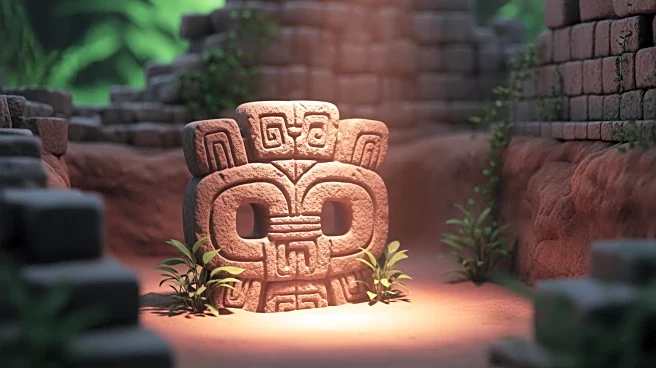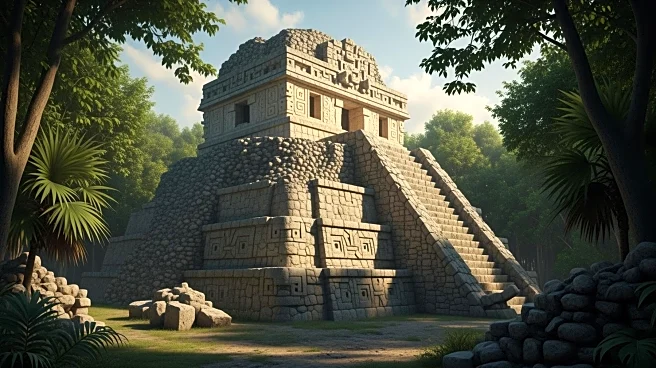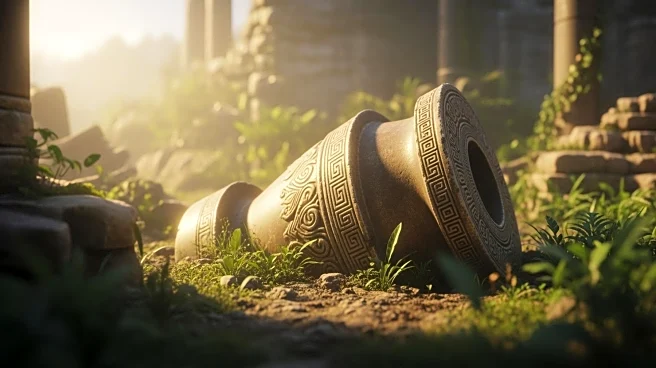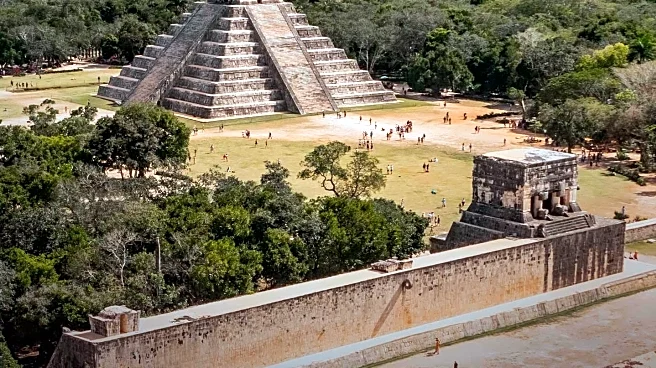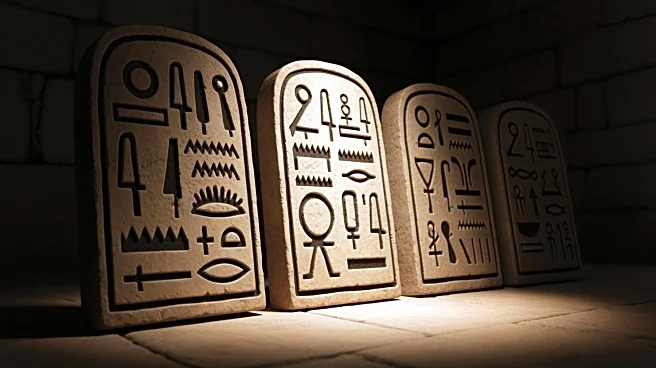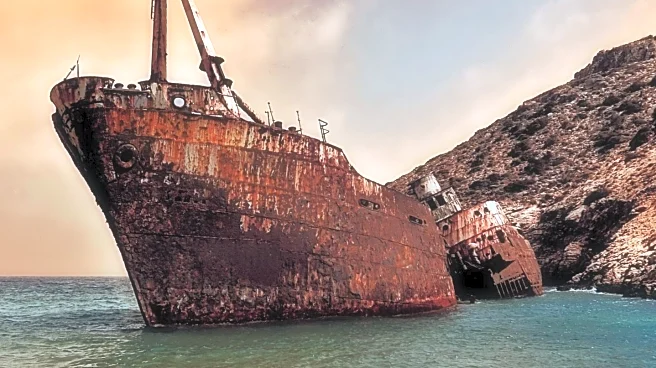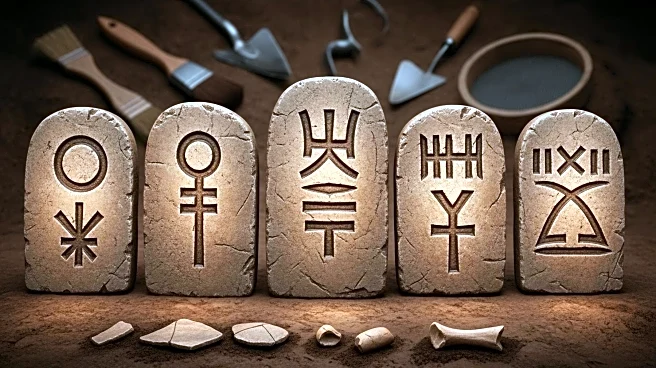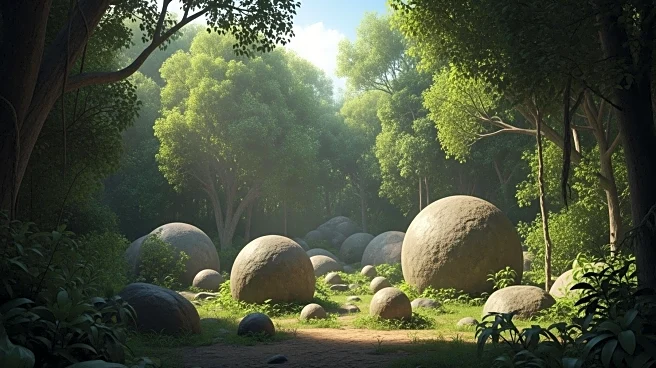What's Happening?
Archaeologists from Mexico's National Institute of Anthropology and History (INAH) have discovered a well-preserved ancient city on Guerrero's Costa Chica, dating back over 1,200 years. Named Paso Temprano
by researchers, the site offers a glimpse into the Epiclassic period of Mesoamerican history. The city spans over 1.2 kilometers and features defensive walls, ceremonial areas, and residential compounds. The architecture, including Mixtec-facing construction and a 49-meter-long ball court, suggests both practical and spiritual significance. The layout indicates a social hierarchy, with elevated areas likely reserved for the elite. The discovery provides valuable insights into the urban planning and societal structure of ancient Guerrero.
Why It's Important?
The discovery of Paso Temprano is significant as it offers a deeper understanding of the cultural and historical context of ancient Mesoamerica. The site's preservation allows researchers to study the architectural techniques and social organization of the period, potentially redefining knowledge of the Epiclassic and Early Postclassic periods. The presence of ceremonial spaces and a ball court suggests the city was a spiritual and cultural center, highlighting the complexity of its inhabitants. This discovery could lead to a better understanding of the region's pre-Hispanic past and the civilizations that thrived there, contributing to broader archaeological and historical studies.
What's Next?
Ongoing research at Paso Temprano aims to uncover more information about the city's origins and its role in ancient Guerrero. Archaeologists hope to determine the identity of the city's builders and whether it was part of a broader cultural network. Supported by INAH, further excavation is expected to yield additional insights into the region's cultural and historical significance. Researchers anticipate that the study of Paso Temprano could define a local archaeological culture, enhancing understanding of the Epiclassic and Early Postclassic periods.
Beyond the Headlines
The discovery of Paso Temprano raises questions about the identity of its builders and their cultural connections. While historical evidence suggests later occupation by the Amuzgo and Mixtec peoples, the original inhabitants remain a mystery. The site's remarkable preservation offers an opportunity to explore the social and political dynamics of ancient Guerrero, potentially revealing new aspects of Mesoamerican civilization. The study of Paso Temprano could lead to a reevaluation of existing historical narratives and contribute to the broader understanding of ancient societies.
